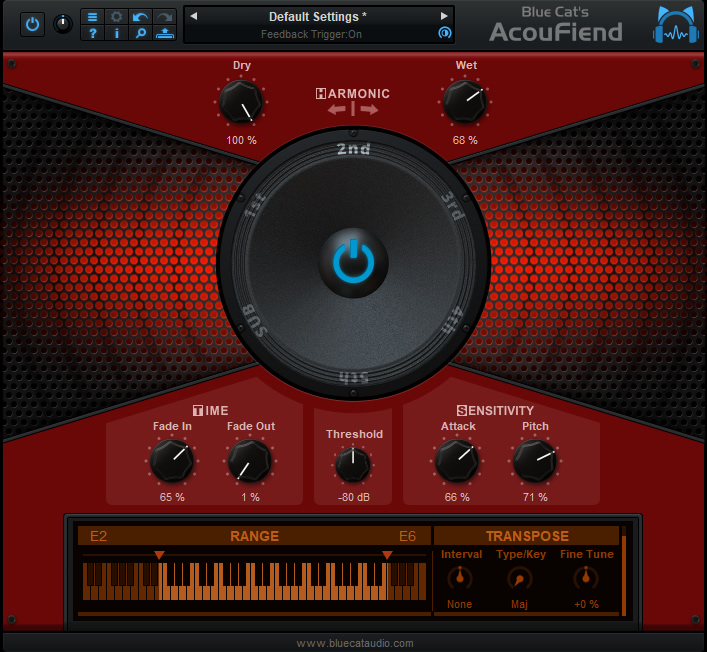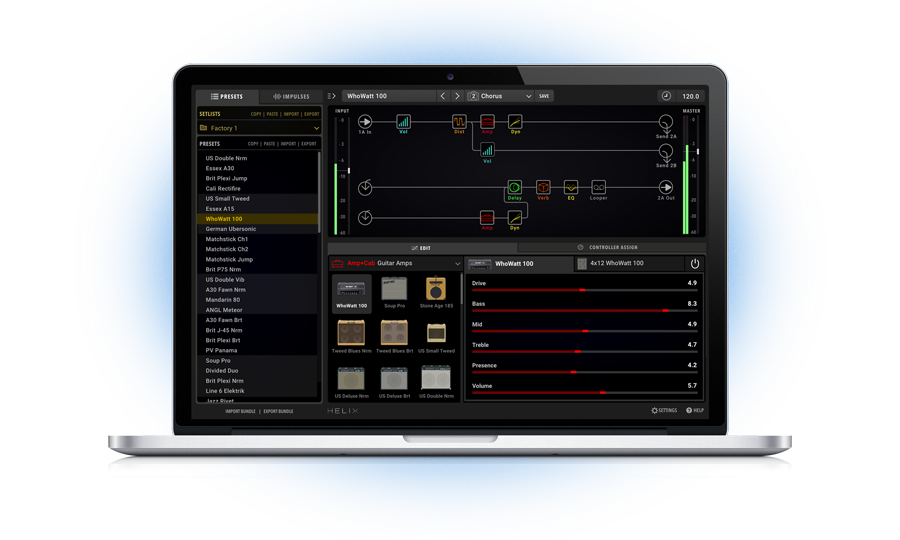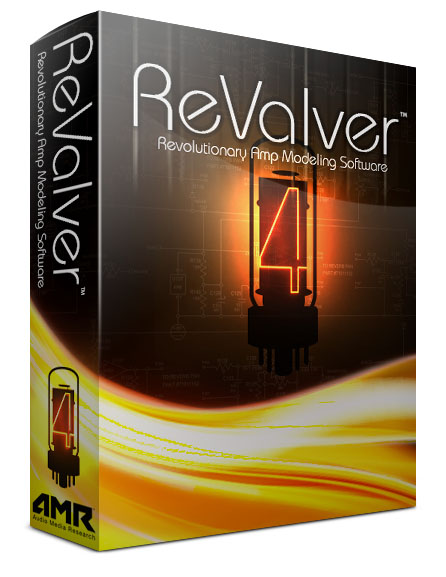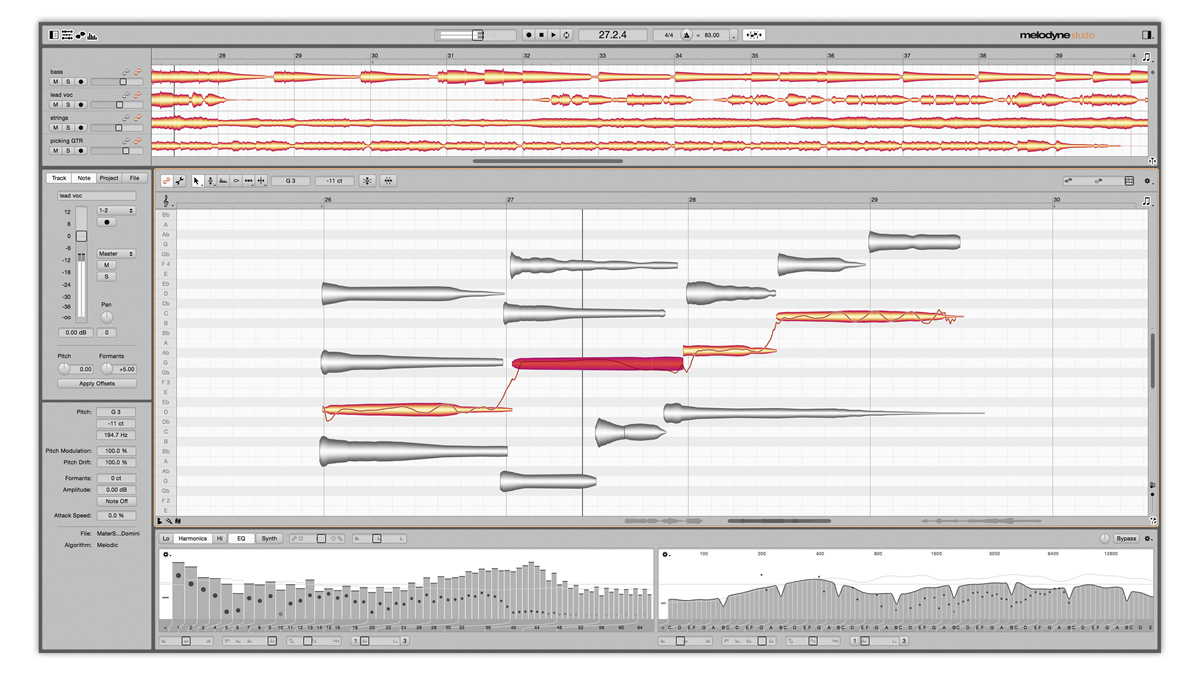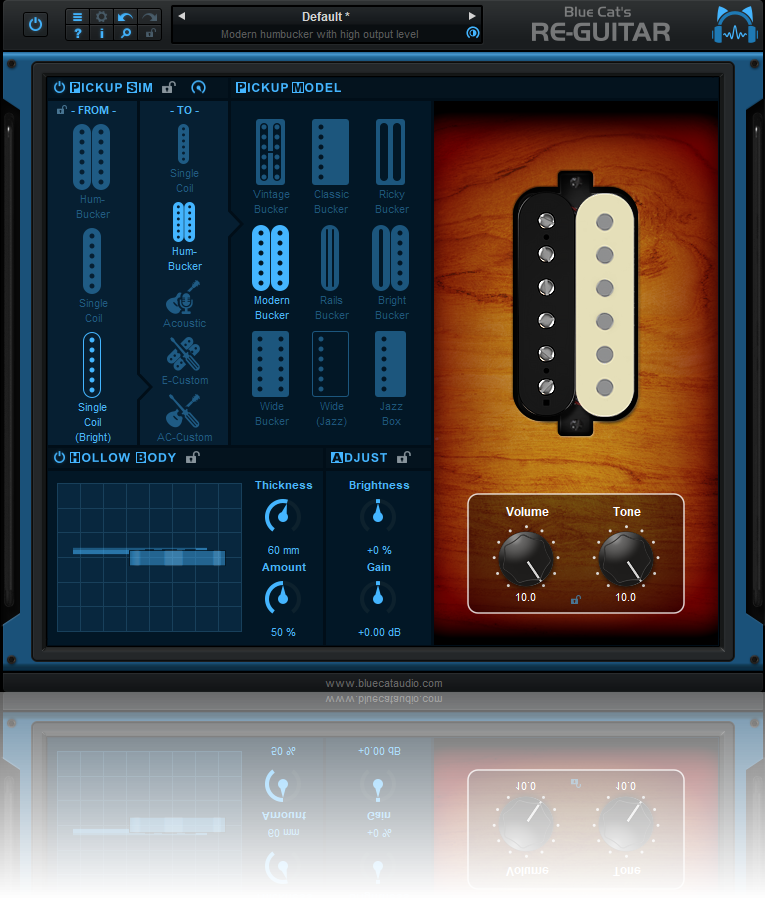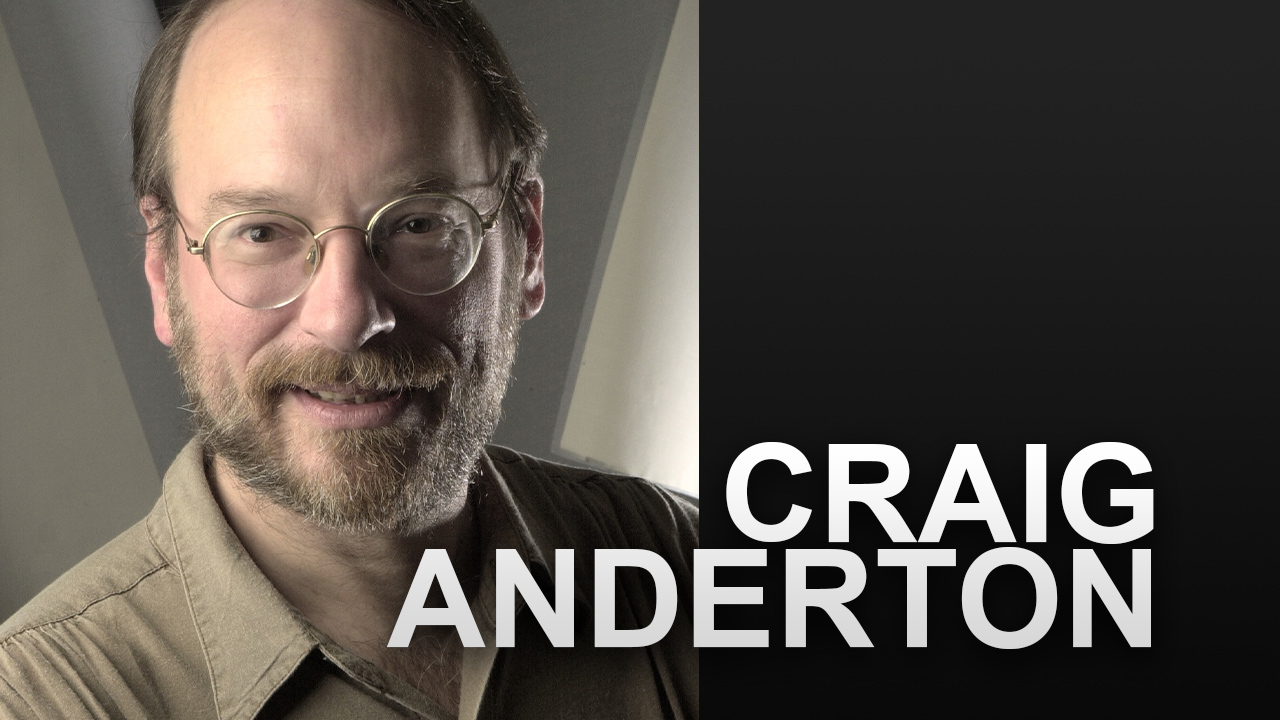
Artist Focus: 6 plugins for 6 Strings with Craig Anderton
Author/musician Craig Anderton is an internationally recognized authority on musical technology. He has authored over 40 books, mastered hundreds of tracks, worked on over 20 albums, played Carnegie Hall, written over 1,000 articles, as well as lectured on technology and the arts in 38 US states, 10 countries, and in 3 languages.
Let's face it, we have enough cool stuff that we can make any guitar sound we want—or in the immortal words of the Who, "anyway, anyhow, anywhere I choose." Here are six of my favorite guitar-friendly software programs, in no particular order.
Craig Anderton
I'm always partial to software that violates the laws of physics. Acoufiend gives you authentic "stack-turned-up-to-11" feedback effects in the box—no ear-shattering amp levels required. I'm not quite sure how they do it, and of course the sustain isn't infinite, but I don't care. It works, it's cool, and you can tweak it more deeply than it might appear at first. This is a home run.
Craig Anderton
Blue Cat's AcouFiend is an acoustic feedback simulator plug-in that can make your guitars scream, growl, or sing, even at low volume or through headphones, and it gives you total control over it.
AcouFiend simulates the acoustic feedback (a.k.a "Larsen effect") well known to guitarists playing loud and close to their speaker... Except that here, you have total control over the effect.
You can choose when and how to trigger the feedback, on sustained notes or chords. The plug-in lets you select the main harmonic of the feedback, and you can even choose to transpose it for more creative effects.
Of course, it can be entirely automated or controlled via MIDI.
And since it is a plug-in, it is not just for guitars: create screaming synths, sustained vocal harmonies and more..
Main Features:
- Acoustic feedback simulator.
- Total control over the feedback: adjust the rise and fall time, the sensitivity to pitch and amplitude changes, and the generated harmonic.
- Supports chords.
- Limit the range of notes that can produce feedback.
- Transpose the feedback signal to create harmonies.
- No latency.
It seems unfair to pick one amp sim out of all the great ones out there (and yes, I use 'em all)—AmpliTube 5, Guitar Rig 6, PRS Supermodels, Overloud TH-U, BIAS Amp 2 with its cool matching trick, etc. What distinguishes Helix Native is the ease with which it can do 3- and 4-band multiband processing, which matters greatly to me because I hardly ever use only a single or parallel chain anymore. And, their updates aren't just little tweaks. Every now and then they unleash some massively useful additions, and so far, they've been free.
Craig Anderton
Helix Native is a VST3, AAX, and AU plug-in that delivers the same HX amp and effects modeling found in Line 6's best-selling Helix hardware guitar and effects processors, bringing authentic tone to your favorite DAW.
Like the hardware members of the Helix family of guitar processors—Helix Floor, Helix Rack, and Helix LT—the Helix Native plug-in features accurate recreations of vintage and modern amplifiers, speaker cabinets, microphones, and effects, as well as extensive signal-routing capabilities and an intuitive user interface. Not just for guitarists, the Helix Native plug-in is also ideal for producers and engineers, sound designers, film/TV/game composers, electronic musicians, and anyone else seeking to craft new and exciting sounds and special effects. And preset compatibility across the entire Helix family allows Helix hardware users to bring studio-created sounds to the stage by simply transferring their plug-in presets to their Helix Floor, Helix Rack, or Helix LT processors.
The Helix Native plug-in provides 60+ amplifiers, 30+ speaker cabinets and a wide range of 100+ effects. The interface provides a fast and intuitive tone editing workflow, so you can instantly access your entire signal chain and quickly tweak your settings. Helix Native also supports 3rd party impulse responses (IRs), offering even greater tonal flexibility.
The Helix Native plug-in features broad compatibility with popular DAWs, offering 64-bit performance on AAX, AU and VST3 platforms.
ReValver 4 is another amp sim that gets the spotlight, for two unique features. As an inveterate solderhead and DIY fan, being able to modify individual components in amplifiers and effects—not just high-level edits, like changing tubes—opens up a rabbit hole of "what if I...?" creative options. Yes, you can change the values of individual capacitors and resistors in not just the models, but the effects. It also has instrument modeling built right into the program, which transforms guitar and pickup sounds into other guitar and pickup sounds. I sometimes get the sense this program is underrated. It shouldn't be.
Craig Anderton
ReValver models guitar amplifiers, stompboxes and effects at the component level, resulting in unmatched realism, dynamics and tone.
ReValver's RIR 2 Cabinet Modeling takes convolution cabinet modeling to another level while ACT (Audio Cloning Technology) allows incredible instrument modeling on the input and tone matching on the output. ReValver can also create and load amp clones in our ACT Combo module, making ReValver virtually unlimited. Expand ReValver even further by hosting 3rd party VST/AU plugins within the software. Take ReValver to the live stage with full MIDI control and GIG Mode for seamless switching between presets.
Download ReValver 4 for free and then browse the Amp Store for a wealth of additional amp/stomp/effects modules, ACT content and bundles.
ReValver is available as a stand alone program or as an AAX, VST or AU plug in.
Upgrade Licenses
Update from Melodyne Studio 4
Upgrade from Melodyne Studio 3
Upgrade from Melodyne Editor
Upgrade from Melodyne Assistant
Upgrade from Melodyne Essential
I have the polyphonic version. I hardly ever use it on guitar, although for soprano ukulele, it compensates for tiny fret spacings and big fingers. But even the basic, Melodyne Essential version does my main Melodyne application—flattening out the pitch of bass notes. From a physics standpoint, bass strings should be longer than they are, but then you'd have an unplayable instrument. The workaround for getting low pitch is reducing the string tension, however the tradeoff is that this causes the pitch to flop around as the string decays. Melodyne can flatten these pitch variations so your bass part is in tune—just like it would be if you played it on the low end of a 9-foot Bosendorfer Grand.
Craig Anderton
Melodyne studio – the way you want to work with audio today
Melodyne 5 studio is the complete Melodyne, with all Melodyne's unique functions and possibilities. For professional vocal editing, choirs, instruments of all kinds, and samples. And with a multi-track workflow unsurpassed in terms of ease-of-use and musicality:
- Grammy Award-winning technology, including DNA Direct Note Access.
- Exceptionally musical and intuitive note-based way of working.
- The algorithms Melodic (with Sibilant Detection), Percussive, Universal, Polyphonic.
- Multitrack Note Editing – edit multiple tracks in a single Melodyne window.
- The complete Melodyne toolkit.
- Macros for correcting intonation, timing quantization and leveling – even across tracks.
- The Chord Track and Chord Grid with automatic chord recognition.
- Tempo detection and editing.
- The Sound Editor, offering unique control over tone colors.
- Comprehensive functions for the editing of scales, tuning systems and temperaments.
- Inspectors for quick access to all parameters.
- Polyphonic audio-to-MIDI export.
YouTube.com/watch?v=RkQ2l5TWqeY
What's new in Melodyne 5:
YouTube.com/watch?v=wSS1OSAEisE
Waves makes great plug-ins. The Diamond Bundle is kind of a Waves Greatest Hits package for $300. There's no one specific plug-in that makes this collection a valued part of my studio, but so many times when I need a plug-in to do something, the Diamond bundle has it. This includes unusual applications, like using the Sibilance De-Esser to do the equivalent of rolling back the tone control when playing hard, which sweetens up the signal before going into an amp sim. Basically, it's a versatile collection of universally useful tools, and a lot less expensive than buying the plug-ins individually.
Craig Anderton
A comprehensive collection of audio processing tools, Waves Diamond Bundle brings unparalleled signal processing power to your studio, for tracking, mixing, mastering, creative sound design, and audio restoration. Diamond includes all the plugins found in our Platinum, Restoration, and Transform bundles, as well as V-Comp, L3 Multimaximizer and more. From Dynamics, Equalization, and Reverb to Pitch Correction, Spatial Imaging, Harmonic Enhancement and beyond, Diamond is a must have for every serious studio:
- Over 60 powerful audio plugins.
- For mixing, mastering, live sound, restoration and more.
- Includes vintage models, dynamics, equalizers and more.
For more info visit waves.com
We started with Blue Cat Audio, and we'll end with them too. Re-Guitar does the same kind of instrument modeling as ReValver 4, but it's a stand-alone plug-in. Does it really make a Les Paul sound like a Strat? Well...no, because it can't change your guitar's body, scale length, fingerboard, fret material, and the like. But what it can do is nail the correct vibe. If you've recorded a Les Paul track and wish you had used a Strat instead, Re-Guitar will do the job for you with a couple of clicks, instead of having to re-record the part. All but the most discerning listeners won't be able to tell the difference.
Craig Anderton
Re-Guitar can simulate many kinds of guitar tones (electric or acoustic), regardless of the solid body guitar model used for recording: you can change the pickups, dig the body or emulate an acoustic guitar, all inside the box, without modifying the original instrument.
"Re-guitaring" can be used to enhance or completely modify the guitar tone while playing your own instrument, or to virtually switch guitars after recording - just like we already do with guitar amp simulations.
Main Features:
- Guitar tone modeler, with electric pickups, acoustic guitars and hollow body emulations.
- Built-in single coil pickups: single hot, vintage, modern, active, tele, neck+mid, bridge+mid, P90, P90J.
- Built-in humbucker pickups: vintage, classic, ricky, modern, rails, bright, wide, wide(jazz), jazz box.
- Built-in piezo & acoustic guitars: solid body piezo, acoustic sim pedals, modern & dreadnought, jumbo, mini jumbo, 000, small.
- Create your own electric pickups or acoustic guitar emulations with the custom electric and custom acoustic models.
- Adjust hollow body thickness and amount.
- Adjust simulations brightness and gain.
- Built-in virtual volume and tone pots.
- No latency.
And there you have it, 6 favorites. I could easily have gone up to 11—after all, "it's just better"—but if you're looking for some new goodies to juice up your guitar sound, I've found these to be invaluable.
Craig's latest eBooks -- How to Record and Mix Great Guitar Tracks, Max Your Mix!, and The Huge Book of Studio One Tips and Tricks -- are available from Sweetwater Publishing. Visit craiganderton.org (with over 200 free articles), check out his music and videos at youtube.com/thecraiganderton, and follow him on instagram @craig.anderton and twitter @craig_anderton.>>
Read more
Artist Focus: David Mash chooses his Top-5 plugins
Artist Focus: DJ Swivel's top plugin picks
Read More Artist Focus

Discussion
Several cool and innovative products in this list. Also super cool to have Craig Anderton on KVR! (In addition to the list of credits above, he was the editor in chief of Electronic Musician for many years, before Steve the O.).
Please log in to join the discussion

